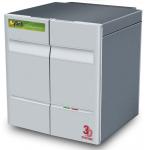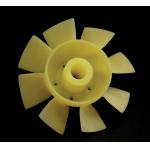March 1, 2007
By DE Editors
An Easy Move to Vista from XP
After engineers at Microstar Laboratories, Inc. (Bellevue, WA) worked with successive beta versions of Windows Vista software, the company has announced that its data acquisition processor (DAP) boards or systems can now be installed on Windows XP, and that the user can later move an application to Vista without any changes to the parts of the application that interface with the data acquisition hardware and related software.
Every DAP board includes onboard intelligence — a processor running a real-time operating system. DAP boards can communicate and work as a synchronized data acquisition system not only within a single PC but also across a network. Windows applications control the real-time operating system on each DAP board.
The updated products enable your Windows applications to interface with DAP boards in exactly the same way, whether your applications are running under Windows XP or under the Windows Vista OS.
Microstar Laboratories offers a Windows application, DAPstudio, that lets you configure and run any number of DAP boards in a system from any PC on a network. DAPstudio uses Accel32 software, which is included with every DAP board, or DAPcell client/server network software, which is a separate product. Accel32 and DAPcell have been updated to run under Windows Vista. DAPstudio, like any other Windows application that uses Accel32 or DAPcell, requires no further changes to run under Windows Vista.
The updated products described here will work with the 32-bit edition of Windows Vista and are available for immediate delivery. Later updates will allow all products to work with the 64-bit edition as well.
For more information about the migration, visit Microstar Laboratories.
3D Systems Corporation (Rock Hill, SC) recently announced its plans to introduce a compact office modeler, the V-Flash desktop modeler, this summer. The V-Flash will be able to build ready-to-use 3D models in offices, classrooms, or home offices.
 |
| V-Flash |
The V-Flash measures 25 x 26 x 27 in. or about the size of a compact refrigerator. It weighs about 100 pounds and has a maximum build volume of 7 x 9 x 8 in. It will have standard power requirements and a plug-and-play setup.
 |
| V-Flash |
A key component of the V-Flash is its compact material cartridge, which provides integrated material metering and dispensing. This means that you can simply remove an old cartridge, install a new cartridge, and continue making models. The V-Cartridge also contains pumps, dispensers, re-coaters, and transporters as well as routine maintenance elements. As a consequence, V-Cartridge maintenance means you can pop out and replace a cartridge rather than call in a service technician.
The V-Flash desktop modeler will be priced at $9,900. For more information, visit 3D Systems Corporation.
Beta Version of NVIDIA CUDAT Unleashes Power of GPU Computing
New computing capability available online.
A public beta version of the NVIDIA CUDAT Software Developer Kit (SDK) and C-compiler for computing on NVIDIA GPUs is available for download. GPU Computing with the CUDA SDK is a new approach where hundreds of on-chip processors simultaneously communicate to confront complex computing problems.
“With the recent introduction of CUDA technology, the parallel computing power of the GPU is now accessible to virtually any developer through standard C programming language,” said Andy Keane, general manager of GPU Computing for Santa Clara, California-based NVIDIA. The CUDA technology is available in GeForce 8800 graphics and future NVIDIA Quadro Professional Graphics solutions.
Developers can download the beta version of the CUDA SDK and C-compiler for Windows XP and Linux (RedHat Release 4 Update 3). Click here to do so. GPU Computing Forums for news, discussion, and programming tips are also available, click here.
UPF announced for low-power IC design.
The members and Board of Directors of Accellera (Napa, CA) have approved the unified power format (UPF) 1.0 as an Accellera standard. The organization provides design and verification standards used in the electronics industry. The open standard was developed over the course of five months by Accellera members working collaboratively with other interested companies.
The UPF standard is a convergence of donations from seven companies. Electronic design automation (EDA) vendor contributions were derived from years of use of their products on taped-out low-power designs. End customers contributed their internally developed optimization and analysis technologies dealing with application-specific power issues, especially for wireless and handheld devices.
A UPF specification defines how to create a supply network to supply power to each design element, how the individual supply nets behave with respect to one another, and how the logic functionality is extended to support dynamic power switching to these logic design elements. By controlling the operating voltages of each supply net and whether they (and their connected design elements) are turned on or off, the supply network provides power at the level needed by the functional areas of the chip to complete the computational task in a timely manner.
The open standard permits all EDA tool providers to implement advanced tool features that enable the design of modern low-power chips. Starting at the register transfer level and progressing into the detailed levels of implementation and verification, UPF facilitates an interoperable, multi-vendor tool flow and aims for consistency throughout the design process.
According to Shrenik Mehta, chair of Accellera, “When leveraged in a design flow, our UPF standard will improve the efficiency and economics of how designers can optimize IC power requirements.”
Subscribe to our FREE magazine, FREE email newsletters or both!
About the Author
DE’s editors contribute news and new product announcements to Digital Engineering.
Press releases may be sent to them via [email protected].






